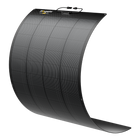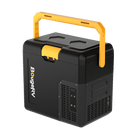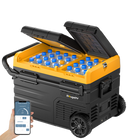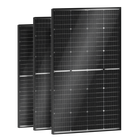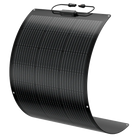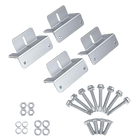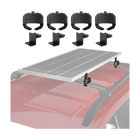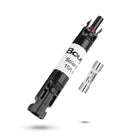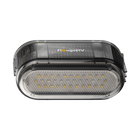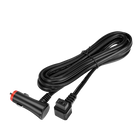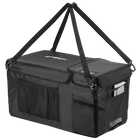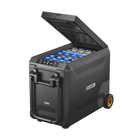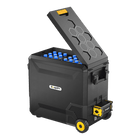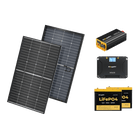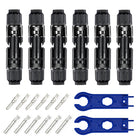Types of 12V Batteries: A Comprehensive Guide

Portable power solutions are increasingly essential, understanding the various types of 12V batteries available can help you make an informed choice for your specific needs. Whether you're powering a vehicle, running appliances during camping trips, or seeking backup energy for solar installations, 12V batteries are useful for a multitude of applications.
In this comprehensive blog, we will delve into the different types of 12V batteries, their features, advantages, disadvantages, and typical uses. By the end, you'll be better equipped to choose the right 12V battery for your requirements.
Overview of 12V Batteries
A 12V battery is a battery with a voltage of 12 volts. It is commonly used in various applications, such as automotive, marine, renewable energy systems, and recreational activities.
The "12V" refers to the electrical potential difference the battery provides. Different types of 12V batteries vary in terms of chemistry, construction, performance, and cost. Understanding these differences is crucial for selecting the right battery for your needs.
12V Battery Types
1. Lithium-Ion Batteries

Lithium-ion (Li-ion) batteries are rechargeable power sources widely used in various electronic devices and electric vehicles. They store energy through lithium ions moving between the anode and cathode during discharge and charge cycles. Like any technology, Li-ion batteries come with their own set of advantages and disadvantages.
Pros:
-
High Energy Density: Li-ion batteries provide more energy per unit weight, making them ideal for portable electronics and backup power.
-
Low Self-Discharge: They retain their charge longer when not in use compared to other rechargeable batteries.
-
Long Life Cycle: With proper care, they can endure many charge/discharge cycles.
-
Fast Charging: These batteries typically support quicker charging times.
Cons:
-
Cost: Li-ion batteries are generally more expensive than other types.
-
Thermal Runaway: They can overheat and catch fire if damaged or improperly charged.
-
Degradation: Performance degrades over time, especially with exposure to high temperatures.
Typical Uses: Li-ion batteries are commonly found in smartphones, laptops, electric vehicles, and renewable energy storage systems due to their efficiency and compact size.
Lithium-Ion Battery Subtypes: LiFePO4 (Lithium Iron Phosphate) & NMC (Nickel Manganese Cobalt) Batteries
LiFePO4 batteries are known for their exceptional safety, thermal stability, and longer cycle life, making them ideal for applications like electric vehicles and energy storage systems. They have a lower energy density compared to NMC batteries, which means they store less energy per unit of weight or volume, leading to larger and heavier battery packs.
On the other hand, NMC batteries provide higher energy density, which translates to longer run times and more compact designs, suitable for consumer electronics and electric vehicles. However, they are less stable at high temperatures and have a shorter lifespan compared to LiFePO4 batteries. NMC batteries also typically use more expensive materials, including cobalt, leading to higher costs.
While lithium-ion batteries offer many benefits, they aren't the only option. Let's take a look at another widely-used type: Lead-Acid Batteries.
2. Lead-Acid Batteries

Lead-acid batteries are one of the oldest and most commonly used types of rechargeable batteries. They operate by converting chemical energy into electrical energy through a reaction between lead plates and sulfuric acid.
Pros:
-
Cost-Effective: Generally cheaper to produce compared to newer battery technologies.
-
Reliable: Proven technology with a long history of dependable performance.
-
High Surge Current: Capable of supplying high surge currents, making them ideal for applications requiring a large burst of power.
-
Recyclable: High recycling rates due to established processes.
Cons:
-
Heavy and Bulky: Lower energy density means they are heavier and bulkier than alternatives like Li-ion batteries.
-
Limited Lifespan: Shorter cycle life and can degrade more quickly with deep discharges.
-
Maintenance Required: Some types require regular maintenance to ensure proper functioning.
-
Environmental Concerns: Contains toxic lead and sulfuric acid, posing environmental and health risks if not disposed of properly.
Typical Uses: Lead-acid batteries are commonly found in automotive starting, lighting, and ignition (SLI) systems, backup power supplies for telecommunications and emergency lighting, and renewable energy storage systems.
Lead-Acid Battery Subtypes: Flooded Lead-Acid Batteries, SLA (Sealed Lead-Acid) Batteries, and AGM (Absorbent Glass Mat) Batteries
|
Flooded Lead-Acid (Wet Cell) Batteries |
Sealed Lead-Acid (SLA) Batteries |
Absorbent Glass Mat (AGM) Batteries |
Gel Cell Batteries |
|
|
Features |
|
|
|
|
|
Advantages |
|
|
|
|
|
Disadvantages |
|
|
More expensive than flooded and sealed lead-acid batteries |
|
|
Typical Uses |
|
|
|
|
Aside from lead-acid and lithium-ion, nickel-based batteries also offer unique features worth considering.
3. Nickel-Based Batteries
Nickel-based batteries, such as Nickel-Cadmium (NiCd) and Nickel-Metal Hydride (NiMH), are rechargeable batteries that use nickel oxide hydroxide and a different material for the negative electrode. They are known for their reliability and robustness.
Pros:
-
Durable: Can withstand a wide range of temperatures and rough handling.
-
Fast Charging: Capable of rapid charging without significant damage to the battery.
-
High Cycle Life: Especially NiCd, known for lasting through numerous charge and discharge cycles.
-
Performance: Maintain stable voltage levels throughout discharge.
Cons:
-
Memory Effect: Particularly in NiCd batteries, partial discharge can reduce their maximum energy capacity.
-
Environmental Impact: Contains toxic metals like cadmium, posing environmental disposal issues.
-
Self-Discharge: Higher self-discharge rate compared to Li-ion batteries.
-
Weight: Heavier than some newer battery technologies, which can be a drawback for portable devices.
Typical Uses: Nickel-based batteries are commonly used in power tools, medical equipment, two-way radios, and cordless telephones.
Nickel-Based Battery Subtypes: NiCd Batteries & NiMH Batteries
NiCd batteries are known for their durability and ability to deliver high discharge rates, making them suitable for power tools and emergency equipment. They also perform well in extreme temperatures. However, NiCd batteries suffer from the "memory effect," leading to reduced capacity over time if not fully discharged before recharging. They also contain toxic cadmium, posing environmental and disposal concerns. NiMH batteries are often found in consumer electronics like digital cameras and some hybrid vehicles due to their higher capacity and reduced environmental impact compared to NiCd.
On the other hand, NiMH batteries offer greater energy density than NiCd batteries, providing longer runtime for devices like digital cameras and portable electronics. They are more environmentally friendly since they do not contain toxic metals. However, NiMH batteries have a higher self-discharge rate, meaning they lose charge more quickly when not in use, and generally have a shorter lifespan compared to NiCd in high-drain applications.
4. Deep Cycle Batteries

Deep Cycle batteries are designed to provide sustained power over long periods and can be discharged to a greater extent without damage, unlike regular car batteries that deliver short bursts of energy.
Pros:
-
Longevity: They have a longer lifespan due to their ability to handle deep discharges.
-
Durability: Built to endure repeated deep cycling, making them robust and reliable.
-
Consistent Power: Deliver stable and consistent power output over extended periods.
Cons:
-
Cost: Typically more expensive than standard lead-acid batteries.
-
Weight: Heavier due to thicker plates, which can be cumbersome in some applications.
-
Maintenance: Depending on the type (flooded vs. sealed), they may require regular maintenance like topping off water levels.
Typical Uses:
-
Renewable Energy Systems: Used in solar and wind energy setups for energy storage.
-
Marine Applications: Common in boats and yachts for powering trolling motors and onboard electronics.
-
Recreational Vehicles (RVs): Ideal for providing power to appliances and devices.
-
Golf Carts and Mobility Scooters: Employed for consistent, long-term energy delivery.
-
Deep cycle batteries are essential where long-lasting, reliable power is needed over numerous cycles.
There are different types to choose from, like flooded lead-acid, AGM (Absorbent Glass Mat), gel, and lithium-ion. Each has its own perks: AGM and gel batteries don’t spill and need almost no maintenance, while lithium-ion ones last longer and pack more energy.
5. Starting, Lighting, and Ignition (SLI) Batteries
While deep cycle batteries are great for prolonged energy needs, Starting, Lighting, and Ignition (SLI) batteries are designed to deliver short bursts of high current to start engines, power vehicle lighting systems, and support ignition processes.
Pros:
- High Current Output: Provides a quick surge of power necessary for starting engines.
- Availability: Widely available and commonly used in most vehicles.
- Cost-Effective: Generally inexpensive compared to specialized battery types.
Cons:
- Limited Deep Cycling: Not designed for deep discharge; frequent deep cycling can damage the battery.
- Shorter Lifespan: Typically has a shorter lifespan if frequently discharged deeply.
- Maintenance: Some types may require regular maintenance, such as checking water levels in flooded batteries.
Typical Uses:
- Automobiles: Essential for starting car engines and powering electrical systems.
- Motorcycles and ATVs: Used to start engines and power lights and accessories.
- Trucks and Buses: Required for engine start-up and maintaining electrical functions.
- Boats: Employed to start boat engines and provide power for onboard electronics.
SLI batteries are integral to vehicles and equipment where reliable, high-current output is crucial for starting engines and supporting essential electrical functions.
6. Hybrid Batteries
In the realm of automotive technology, hybrid batteries have become increasingly important due to their role in enhancing fuel efficiency and reducing emissions.
Hybrid batteries are specialized energy storage systems used in hybrid vehicles, combining the features of traditional internal combustion engines and electric motors. These batteries help store and deliver electrical energy, enhancing fuel efficiency and reducing emissions.
Pros:
-
Fuel Efficiency: Significantly improves fuel economy by allowing the vehicle to run on electric power alone under certain conditions.
-
Reduced Emissions: Contributes to lower greenhouse gas emissions compared to conventional gasoline engines.
-
Regenerative Braking: Captures and stores energy during braking, improving overall efficiency.
Cons:
-
Cost: Expensive to manufacture and replace, increasing the overall cost of the vehicle.
-
Weight: Adds extra weight to the vehicle, which can affect performance and handling.
-
Limited Lifespan: Battery life may be shorter than the lifespan of the vehicle, requiring eventual replacement.
Typical Uses:
-
Hybrid Electric Vehicles (HEVs): Found in popular models like the Toyota Prius and Honda Insight, providing a blend of gasoline and electric power.
-
Plug-in Hybrid Electric Vehicles (PHEVs): Used in vehicles that can be charged via an external source for extended electric-only range.
-
Public Transportation: Employed in hybrid buses and other transit solutions to improve efficiency and reduce emissions.
Hybrid batteries are crucial for achieving greater fuel efficiency and reducing environmental impact in modern transportation.
12V Battery Types Comparison Chart
Below is a comparison chart for Lithium-Ion Batteries, Lead-Acid Batteries, Nickel-Based Batteries, Deep Cycle Batteries, Starting, Lighting, and Ignition (SLI) Batteries, and Hybrid Batteries:
|
Lithium-Ion Batteries |
Lead-Acid Batteries |
Nickel-Based Batteries |
Deep Cycle Batteries |
SLI Batteries |
Hybrid Batteries |
|
|
Capacity and Energy Density |
High energy density; typically 150-250 Wh/kg |
Moderate energy density; typically 30-50 Wh/kg |
Moderate energy density; typically 40-60 Wh/kg |
Moderate energy density; similar to lead-acid |
Low energy density; optimized for short bursts |
Moderate energy density; varies by type |
|
Weight |
Lightweight |
Heavy |
Moderate |
heavy |
Light to moderate |
Varies (often tailored for specific applications) |
|
Lifespan |
5-15 years; around 500-1,000 cycles |
3-5 years; around 200-300 cycles |
5-10 years; around 500 cycles |
4-8 years; designed for many deep discharge cycles |
Short; frequent replacements needed due to high discharge rates |
3-6 years; designed for frequent cycling |
|
Maintenance |
Low |
Need regular maintenance |
Low |
Low to moderate |
Need regular maintenance |
Low |
|
Cost |
High |
Low |
Moderate to high |
Moderate to high |
Low |
High |
*This chart provides a broad overview and may vary depending on specific models and technological advancements.
Choosing the Right 12V Battery for Your Needs

Selecting the appropriate 12V battery depends on your specific application and priorities. Here are some common scenarios and recommendations:
Portable Electronics and Tools
- Portable Power Banks/Power Stations: NMC (Nickel Manganese Cobalt) lithium-ion batteries are commonly used in smaller power banks due to their high energy density. LiFePO4 (Lithium Iron Phosphate) batteries are commonly found in portable power stations and batteries for outdoor use due to their lightweight nature, long cycle life, high safety, thermal stability, and reliability in various environmental conditions.

- Power Tools: NiMH or NMC batteries are often preferred for their balance of power output, longevity, and portability.
Marine and RV Use
-
Solar Power Storage: LiFePO4 batteries provide excellent energy storage capabilities and longer lifespans.
-
Dual-Purpose: AGM or gel cell batteries offer good performance and durability for both starting and deep cycle use.
Renewable Energy Systems
LiFePO4 batteries are ideal for solar panel energy storage due to their high efficiency and long-term reliability. Similar to solar panels, LiFePO4 batteries are well-suited for wind energy storage.
Automotive Use
- Deep Cycle Applications (e.g., for electric cars): LiFePO4 batteries are highly recommended due to their efficiency, lightweight, and long lifecycle.
- Starting Batteries: Opt for flooded lead-acid or AGM batteries. Both types provide high currents for starting engines.
Emergency Backup
Uninterruptible Power Supplies (UPS): Sealed lead-acid (SLA) batteries are typically used for UPS systems due to their reliability and maintenance-free nature.
Conclusion

Till now, you’ve learned about the different types of 12V batteries and their unique characteristics. By considering factors like capacity, weight, lifespan, maintenance, and cost, you can make an informed decision tailored to your specific needs.
From the reliable, cost-effective lead-acid batteries to the high-performance, long-lasting lithium-ion options, and the robust nickel-based alternatives, each type has its strengths and weaknesses. Whether you prioritize cost, performance, or weight, there's a 12V battery out there that fits your needs!





